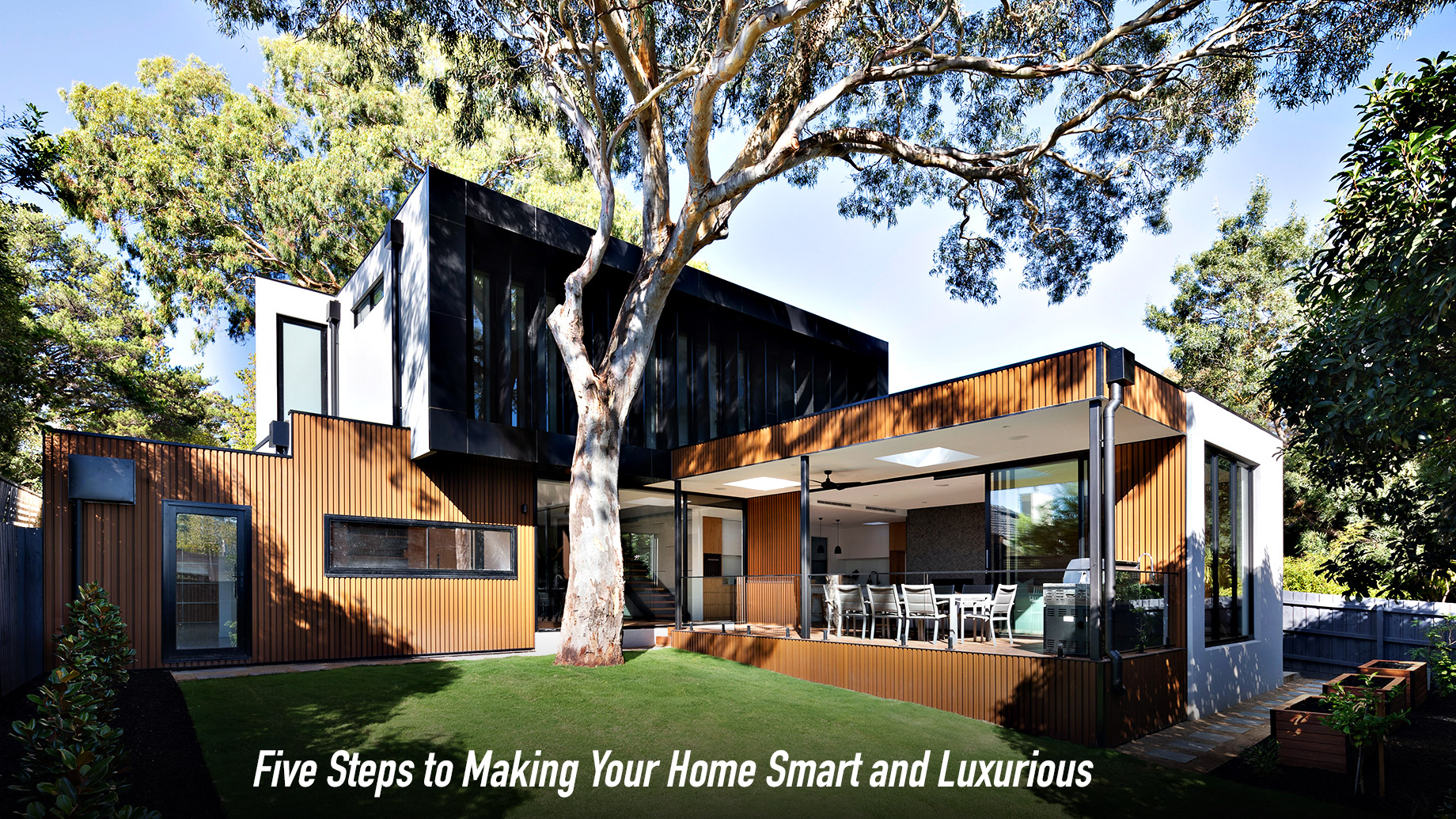
Smart home devices are everywhere. If you think about it, you might have a friend with a Google Nest or a Ring or some other great app. We finally have landed in that era of technology that seems like it’s out of The Jetsons.
In addition to making your house more luxurious, smart home technology can make it more energy-efficient, convenient, and personalized. Are you ready for the best part?
The technology is not only better than ever but more affordable. You can make some serious improvements to your life for less than a few hundred dollars in total.
Here are the five steps to make your home smart and luxurious.
Step 1: Safety First
We’re not here to kill your good time. But you should know that smart home devices are a frequent target for cybercriminals. That’s because they often don’t have the same kind of built-in protections as your computer or smartphone does—and think about how often those can get hacked!
Fortunately, creating a safe framework to base your home around is easy and pays off in so many ways. Above all, you need a VPN.
What is a VPN? A VPN or virtual private network both hides your IP address and encrypts the network connection. This makes it perfect for increasing the safety of IoT devices.
Nowadays, you can directly install VPNs on your smart home devices. If not, you can install a VPN on the router. The benefit of this approach is that you protect everything connected to your WiFi network, including your smartphones and tablets.
In addition to a VPN, you’ll need to make sure your devices always have the latest firmware available. It’s also a good idea to consider using a web-firewall to protect them further.
2. To Bridge or Not to Bridge That Is the Question
As you start to dive into the IoT world, you come across a smart home hub or “bridge.” These hubs are important because they connect all your different devices under one useful setting.
You also might need them because some devices do not have WiFi built-in. Instead, they use different signals like Z-waves to communicate. The hub then takes the Z-waves and translates them into something your phone can understand.
Whether you need, one can get a little complicated. Some devices can directly connect your network via WiFi. However, these tend to be a little more expensive. You can Z-wave versions of them that are often 30-50% cheaper.
If you plan on truly going full Jetsons, then you might want to invest in a hub, which is usually $30-100. But if you’re just starting simple, then you might not need it for now.
3. Start First With Smart Locks
If you’re not sure where to begin, your front door is a good place. Smart locks almost guarantee you’ll never get locked out or have to worry about forgetting your keys again.
There are tons of great options too. There are options with digital keypads, biometric sensors, and audio and video recording. You can even use your phone to unlock your door.
They are also a great way of seeing who is coming in and out of your house. For example, you can create a one-time passcode for a service technician or unlock your doors remotely. In terms of convenience, it’s hard to beat this.
4. You May Have a Smart Home Device Already
Take a look around your house, and you may be surprised at what smart home devices are already in it. For example, if you have bought a speaker anytime in the last few years, it’s likely smart-enabled. The same goes for other items like televisions, security cameras, and even light switches!
5. Choose Your Assistant Carefully
Siri, Alexa, and Google are the most popular virtual assistants. With them, you can say things like “Alexa turn on the AC” or “Okay, Google, shut off the lights.” They are all pretty good. However, compatibility can be an issue.
Certain smart home devices support only particularly smart assistants and even operating systems. While there are plenty of options out there across the board, you’ll need to pay attention during the research phase to ensure you don’t run into any compatibility problems.
Are You Ready for Your Smart Home?
By 2025, the smart home industry is projected to double. Even more exciting technological breakthroughs are on the way. So, there’s never been a better time than for you to start assembling everything you need to have the perfect smart home.